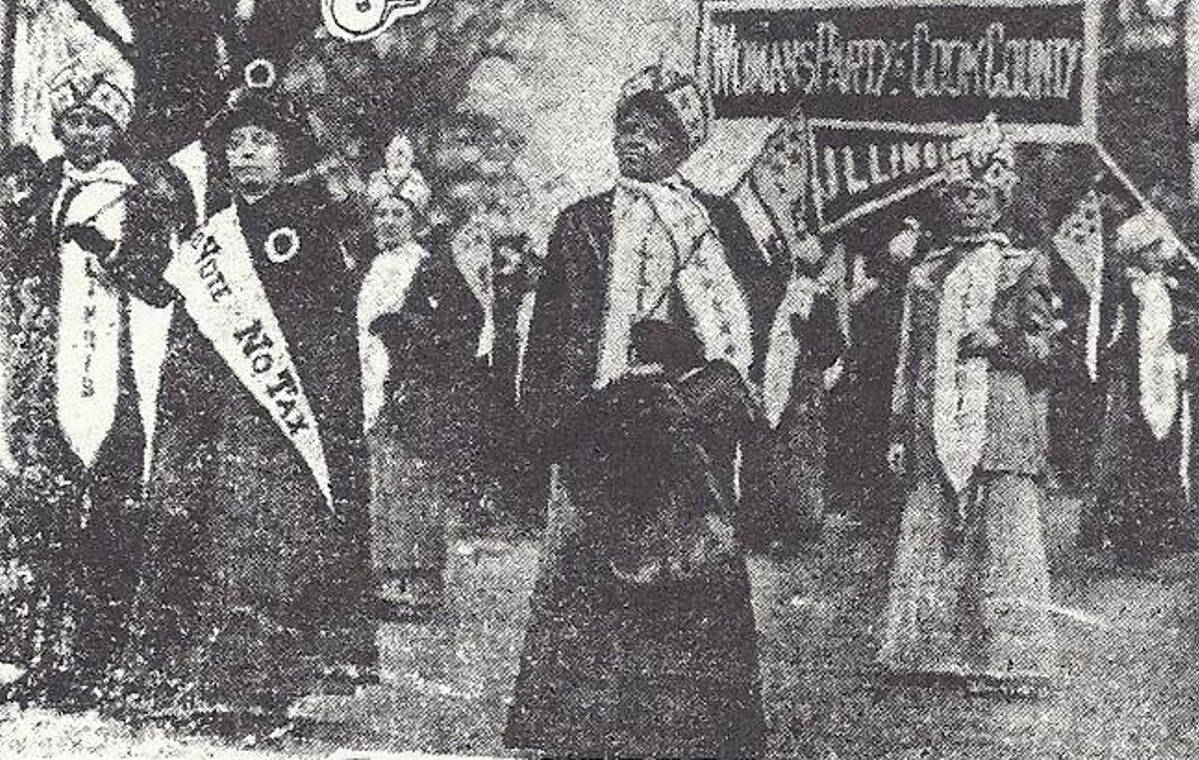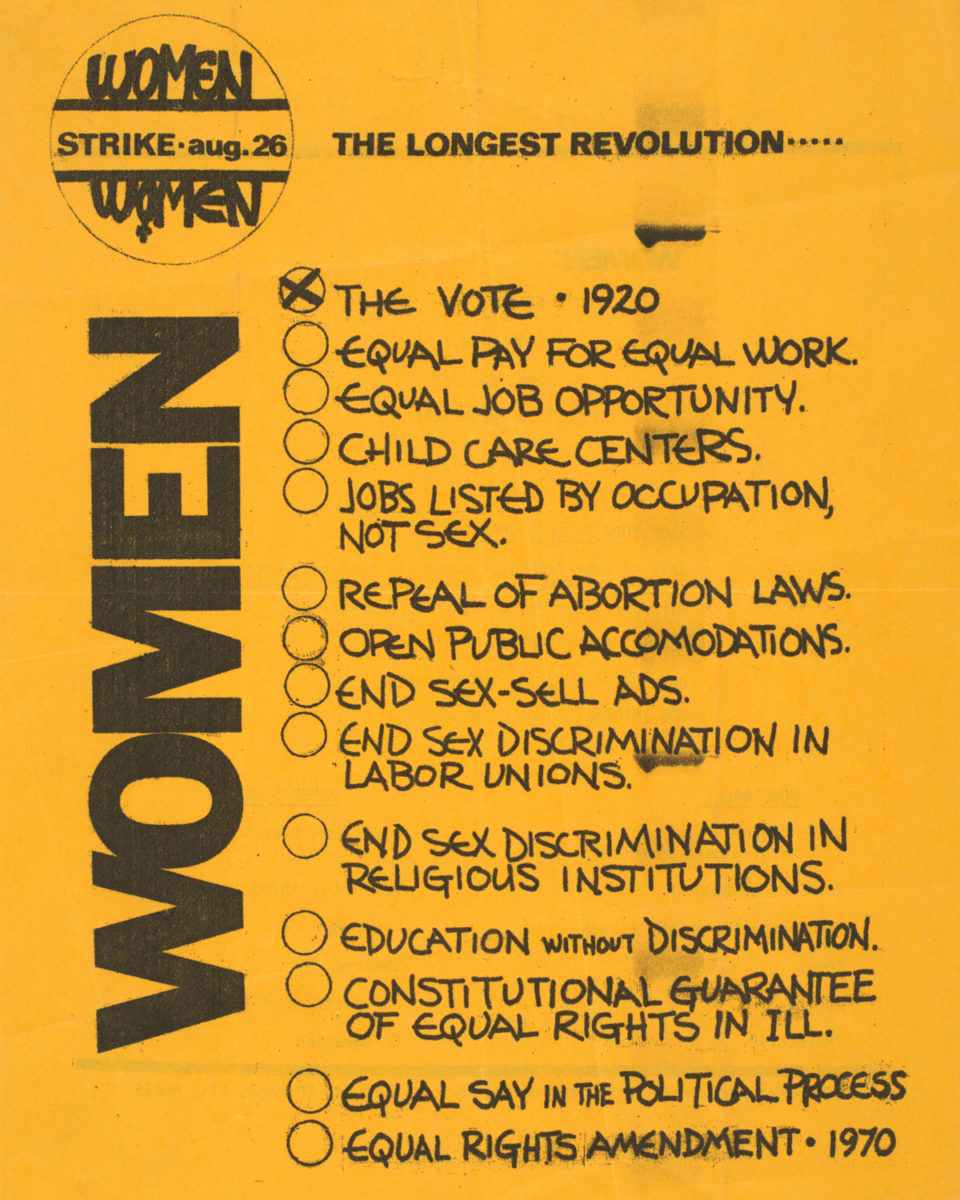INTRODUCTION
Democracy Limited
In February 1919, more than two dozen women boarded a train to share their story of arrest, imprisonment, and brutal treatment for protesting in front of the White House in support of a federal women’s suffrage amendment.
Although these white women omitted women of color from their claims to the rights of citizenship, their nickname for the train—the “Democracy Limited”—is a reminder that the project of democracy is diminished without full and equal participation of all members of society.
The fight for the vote was a complex movement marked by hope and heartbreak, cooperative action and racist exclusion, hard-fought victories and unmet expectations. It was also part of a longer, ongoing journey by activist women from different backgrounds and varied motivations to build a more just society and create lasting change.
The images that follow offer a glimpse of recent and distant moments when Chicago-area women mobilized for change, part of a long history of activism and protest.
May 1914
Girls and young women lead a parade down Michigan Avenue, joining suffragists in demonstrations nationwide on May 2, 1914, urging Congress to pass federal suffrage legislation.
JANUARY 2018
At the second annual Women’s March in Chicago, January 20, 2018, a demonstrator acknowledges the efforts of earlier activists in the struggle for women’s rights. Chicagoans joined protestors in cities across the US on the anniversary of the inauguration of President Donald Trump.
OCTOBER 1916
Members of the National Woman’s Party protest president Woodrow Wilson’s refusal to support federal action on women’s suffrage. Signs asking, “How Long Do You Advise Us To Wait?” pressed Wilson to urge lawmakers to pass a women’s suffrage amendment, first introduced in Congress in 1878. Wilson was speaking at the Chicago Auditorium Theatre on October 19, 1916, during a reelection campaign stop.
FEBRUARY 2017
Girls and women demonstrate outside the Dirksen Federal Building at 219 South Dearborn Street on February 19, 2017. Trump’s immigration policies, including a travel ban—a January 2017 executive order barring the arrival of citizens from seven Muslim-majority countries—sparked widespread protest.
MARCH 1913
Racial justice activist Ida B. Wells-Barnett refused to allow white organizers to hold a racially segregated march in Washington, DC, on March 3, 1913. As fellow white suffragists from Illinois passed by, including Belle Squire and Virginia Brooks, Wells joined them rather than marching separately with Black suffragists as the organizers intended.
JULY 2016
Women participate in a Black Lives Matter rally in Millennium Park on July 11, 2016, to protest ongoing, systemic racial inequities and police brutality against African Americans. The demonstration was held in response to the then-recent shooting deaths of Alton Sterling in Baton Rouge, Louisiana, and Philando Castile in suburban St. Paul, Minnesota, during encounters with police.
DECEMBER 1910
In September 1910, young women walked off the job at clothing maker Hart Schaffner & Marx to protest wage cuts and unfair working conditions. Their action sparked a months-long strike involving more than 40,000 garment workers, half of them women, including many recent immigrants. Here, women line up for a protest parade during the strike on December 12, 1910.
JULY 2013
Employees and union activists protest low wages outside a Chicago Whole Foods Market store in July 2013. In search of a living wage and worker protections, fast food and retail workers were participating in the “Fight for $15” campaign to raise the state’s minimum wage to $15 an hour.
AUGUST 1970
This 1970 flyer announced a “women’s strike” and rallies at the Civic Center Plaza and Grant Park on the fiftieth anniversary of the Nineteenth Amendment’s inclusion in the Constitution, calling attention to just some of the unfinished business of achieving gender equity at work, in education, and in the political process.
JANUARY 2017
Signs carried at the Women’s March in Grant Park signal the range of critical issues demonstrators supported. Marchers in Chicago joined those in Washington, DC, and cities across the US on January 21, 2017, the day after President Donald Trump’s inauguration.



